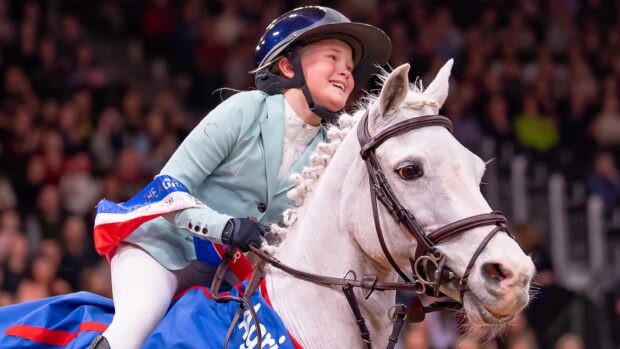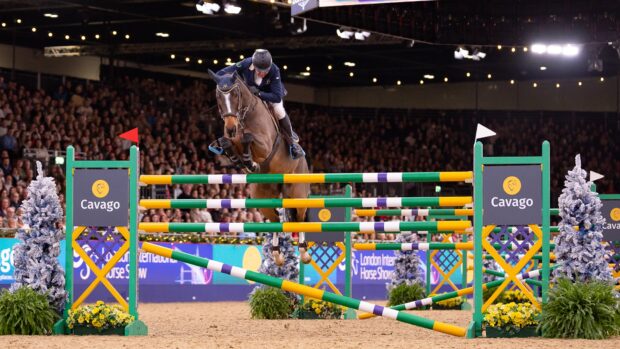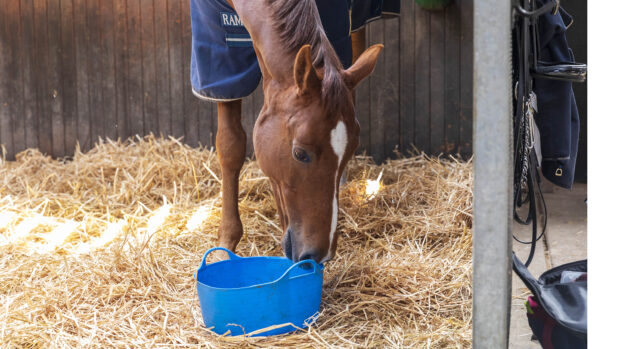How do you describe the indescribable?
It’s almost as if you’re drunk; drunk on sun and sand and space and speed. Flying on fierce heat and the dry desert wind, in an immense emptiness where nothing matters but this place and these horses and these people.
The Namibia Wild Horses Ride is not for the faint-hearted – “Africa is not for sissies,” says lead guide and company boss Andrew Gillies – you have to be happy to accelerate, spread out across endless plains with 14 other riders and 19 other horses, ride for five hours over dunes without a promise of shade, cover some 280km in seven days.
But if you are, the reward is an experience like no other. This isn’t hacking round a desert block, it’s riding with a purpose and a destination, from one camp to the next. This is one of the promises on which the Namibia Horse Safari Company’s 30-year reputation is built; with the experience of the desert, the beauty of the surroundings, the speed, the space and the horses.
Most of us will be familiar with riding at pace in groups, but this is that multiplied by a thousand; without fences or hedges or breakwaters, with space for “proper riding”, and the chance to let it all go with no worry about how to stop.
“It’s like a riding school – but as far as the horizon,” Andrew says. “The desert makes these patterns, like a swimming pool, that stretch as far as you can see, and you can spread out and go like the clappers. It’s bedlam; loose horses, people whooping it up. It’s fantastic. I love being out in the true wilderness, on a horse and sharing it with people.”

Picture by Casimir von Borcke
Days on the ride follow a similar pattern; you’re woken as the stars’ brilliance starts to fade and the sky lightens round the edges – once by jackals calling to each other as they ringed the campsite – then it’s essentially eat, sleep, ride, repeat, for seven days on the trot.
The total distance covered is about 280km (174 miles), in five to six hours of riding every day, but as there is a lack of detailed maps of the area, this isn’t a definitive figure. And although the desert may give an impression of being flat and featureless, this couldn’t be further from the truth.
Every day, every ride, the terrain and the surroundings are different. You find yourself dwarfed by silent, towering island mountains, picking your way up rocky slopes to the breathtaking summit of God’s Window, from which the staggering vastness of this 90 million-year-old landscape is spread out at your feet, galloping across the most perfect going towards mountains that never seem to get any closer. From plains populated by dry trees and tussocky grass to bare sand, in a symphony of red and gold under the biggest sky you’ve ever seen.
One feature of the Wild Horses Ride is crossing the Namib dune sea. This is a 27km stretch of unrelenting sand – five hours’ riding – on terrain that, until the Namibia Horse Safari Company’s first approach in recent years, had not been crossed by man or beast since the 1920s. Although throughout the ride you’re in the remotest of isolation from the real world, this is the place where “if something happens, no one’s coming to save you”. This is wilderness at its most epic.

Picture by Casimir von Borcke
The ride was truly an experience I had never come close to; it’s tough and you might doubt yourself and your ability, such as when you find yourself on top of a dune that seems to stretch down at your feet like a sandy Hickstead Derby bank. But these horses are pros; the feeling almost of surfing down the dunes is an incredible one, which they seem to enjoy as much as their riders, and the feeling of freedom and otherness is liberating. You can understand why about 40% of clients are repeat riders; there is something addictive that means you find yourself planning another trip before you’ve finished the first.
Another beauty of the rides is that you are cut off from civilisation. There’s no signal in the desert and no wi-fi – although Andrew carries a satellite phone in case of emergencies – so from the moment you leave the Namibian capital Windhoek, you’re on your own.
This rare state of being for most of us means you live in the moment like at no other time; it feels as if all you have ever done or want to do is ride through the desert with these people, and horses, whom you have never met before but who for this week are your whole world.
You might expect to find like-minded people on such a trip but it was a privilege to be part of this group, who had come from across the world, from Newfoundland to New Zealand, and who ranged in age from 28 to 65. As Australian stunt rider Caleb put it: “If you can’t find someone to talk to in this group, you’re the problem.”
You might be talking to someone, see the signal for speed, then come back to walk either with an “as I was saying”, to your previous companion, or talking to someone else entirely.
From daybreak to last thing at night, you were guaranteed to hear someone laughing, and everyone lent and gave what others needed; from blister plasters for raw legs to moisturiser for desert-dry skin, to “butt butter” for – well, you get the idea. Thanks, Charles.

Picture by Andrew Gillies
On arrival in Namibia, visitors have to complete an immigration form, which asks for your address while staying in the country. “Camping in the desert,” seemed the only answer, which says everything and nothing about your destination.
Each of the eight wild campsites had its own distinct beauty but each was also the same in some ways. The cavalcade would ride in at the golden hour, when the searing sun had eased slightly and the rocks and sand were glowing. Once the horses were seen to, and after a genius bucket shower, sundowners would be poured and everyone would sit round the campfire, talking, dancing, laughing – and eating. Immeasurable credit to chef Willem, whose mobile kitchen is taken by truck to each campsite and who conjures up three Michelin star-worthy cooked meals every day.
It might feel slightly surreal to be presented with schnitzel and sauerkraut, pancakes and Nutella, oryx sausages or steak with all the trimmings in the middle of nowhere but it’s not a feeling to dwell on; I have to follow a special diet and have never been looked after so well, or eaten so much, in my life. It would be rude not to try the local drinks too; the bar may or may not have been drunk dry by the end of our last night.
Then sleep, in the desert darkness. You can have a tent if you want one but why would you, when you can luxuriate in the most comfortable bedroll you’ve ever felt, falling asleep under the fierce beauty of the stars; the Southern Cross, and the Milky Way as you’ve never seen it in the smaller, dimmer skies of home.

Picture by Teagan Cunniffe
This ride is tough indulgence at its finest but by taking part, you’re also helping give back. African Horse Safaris, with which it is booked, has a foundation via which a donation is made for every rider to African conservation charities, such as the Namibia Wild Horses Foundation.
This charity was set up to support the free horses of the Namib Desert, through whose territory you travel and whose origins are a mystery; they may be descendants of World War I soldiers’ mounts, or those brought to the country by diamond miners.
They have survived in their tough environment but they need the charity’s help. And thanks to the donations, African Horse Safaris founder Isabel Juby galloped through the desert to the charity carrying a cheque for £1,800 last spring.
“When I started African Horse Safaris as a one-woman band from Zimbabwe eight years ago, I never dreamed I’d reach a point where we could create a thriving foundation that gives back to so many important causes,” Isabel says.
“It was an honour to ride my darling Aroka, a sassy, brave, eye-wateringly fast chestnut mare I have been lucky enough to ride three times across Namibia, and deliver our first donation cheque to the Namibia Wild Horses Foundation in person.”

Picture by Casimir von Borcke
The Namibia Horse Safari Company has 107 horses in total, from home-bred youngsters – with some top sport horse breeding among them – to retirees, who live in thousands of acres of bush, checked daily when they come for water. Some are rescues; the beautiful Jameson, whom I rode, and Whiskey were found pulling a cart together four years ago. They were emaciated and badly wounded, but have taken to their new life like ducks to water. It’s humbling to think how badly humans once treated them but how well they treat their riders now; I could not have asked for a better equine partner on this ride.
Each group of 20 will work for seven to eight days on the safari, then have six weeks off in their herds. Their fitness and welfare are superb; those who are not being ridden on any day are led by the guides, or run loose alongside their ridden herdmates. Then if one needs a more restful day, he can swap to run free.
For the three months of the off season, they return to the bush. They start an intensive fittening programme at the beginning of each year, which means they’re as happy and ready for the final day’s riding as for the first.
This gave me a profound new respect for what horses are capable of; my warmbloods are not at this level of fitness, but have I been too cautious thinking a second jumping class is too much; 11 more fences doing what they love best? I think I may have been.

Picture by Casimir von Borcke
This was a life-changing experience, for which I will always be grateful, and my fellow riders I think would agree.
Michelle’s last such safari changed everything: “I’ve achieved more in my riding in seven days than in 20 years,” she said. “I’ve never been so fast in my life and I can’t wait to do it again.”
Others spoke of the strength of the bond with the horses – “I can feel her talking to me,” said Jenna – and the power of that relationship in such an inhospitable environment.
Jane had suffered serious injuries in a fall a year before, and lost her horse, so had postponed her Namibian ride to 2024. She was back in the saddle but her confidence was at rock bottom; by the end of the first day, she asked for a faster horse and was at the front.
“I came here nervous and full of anticipation,” she said. “But it’s enabled me to realise I can ride. The horses are phenomenal and it’s liberating; complete freedom.”
If you’re looking for the trip of a lifetime, this is it.
A huge thank you to the horses, most of all. And to African Horse Safaris and the Namibia Horse Safari Company; to Andrew, Larissa, Amelie, Laura, Collen, Nelson, Deon, Willem, Lisbet and Casimir. To my fellow riders; Isabel, Jane, Michelle, Caleb, Charles, Angus, Yvonne, Jenna, Kathrin and Fabienne.
You were amazing. We did it.
How to book
The Namibia Wild Horses Ride, and other Namibian safaris, can be booked via African Horse Safaris
10 nights all-inclusive in 2025 is £6,200pp, excluding flights
Exclusive 5% discount off any Namibian ride with code AfricanHorseSafarisH&HNamibia24
Email: isabel@africanhorsesafaris.com
- To stay up to date with all the breaking news throughout Horse of the Year Show, London International and more, subscribe to the Horse & Hound website
You may also be interested in:

What to wear on a horseback safari: tips from a traveller

40 horsey things to do before you die

Subscribe to Horse & Hound magazine today – and enjoy unlimited website access all year round




